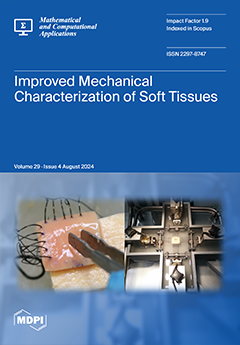We obtain an accurate analytic approximation for the Bessel function
using an improved multipoint quasirational approximation technique (MPQA). This new approximation is valid for all real values of the variable
x, with a maximum absolute error of
[...] Read more.
We obtain an accurate analytic approximation for the Bessel function
using an improved multipoint quasirational approximation technique (MPQA). This new approximation is valid for all real values of the variable
x, with a maximum absolute error of approximately 0.009. These errors have been analyzed in the interval from
to
, and we have found that the absolute errors for large
x decrease logarithmically. The values of
x at which the zeros of the exact function
and the approximated function
occur are also provided, exhibiting very small relative errors. The largest relative error is for the second zero, with
, and the relative errors continuously decrease, reaching
for the eleventh zero. The procedure to obtain this analytic approximation involves constructing a bridge function that connects the power series with the asymptotic approximation. This is achieved by using rational functions combined with other elementary functions, such as trigonometric and fractional power functions.
Full article





